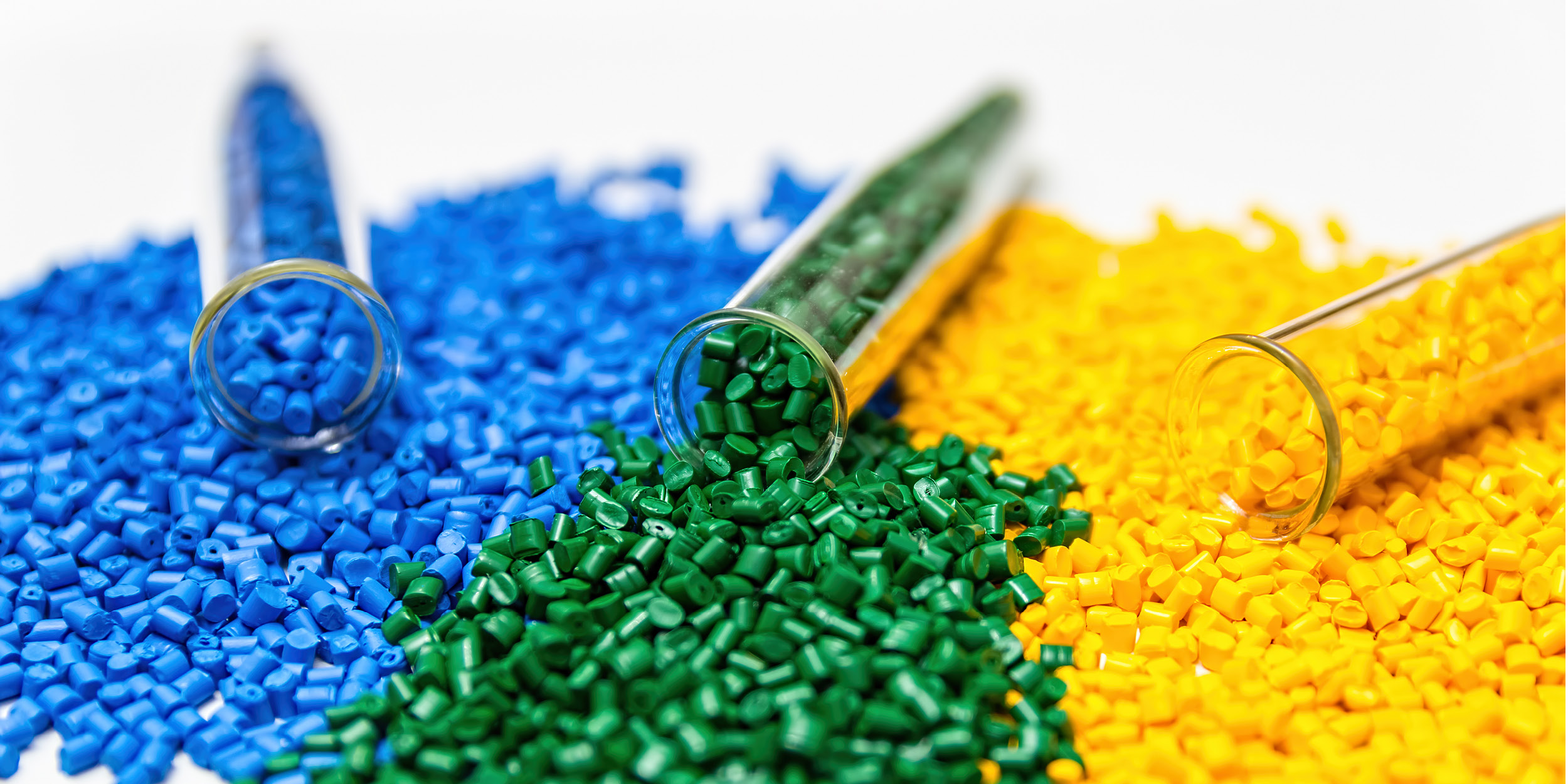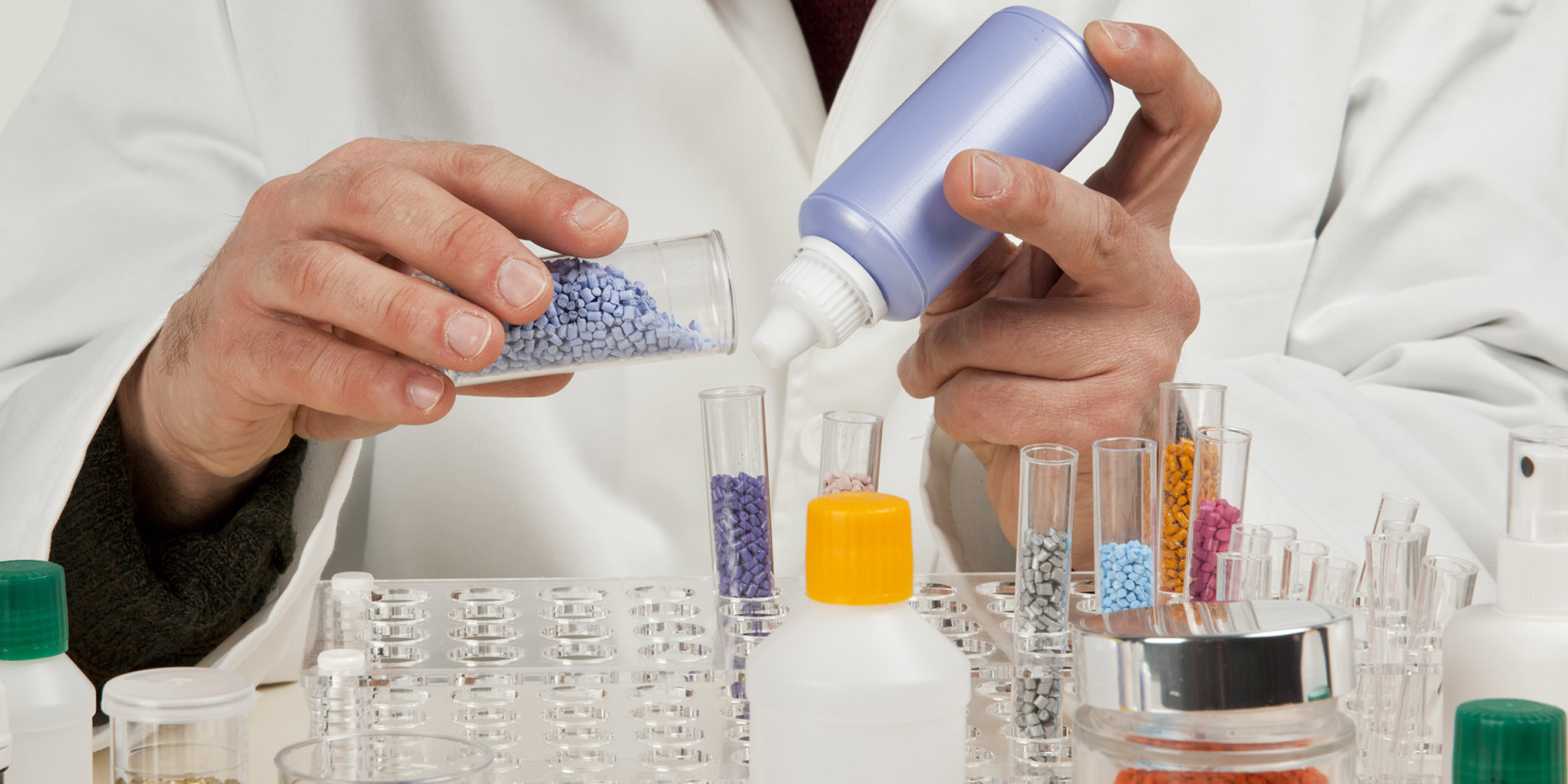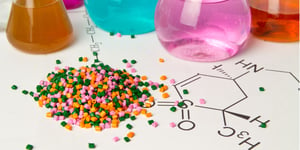Nowadays, global trends tending back to nature, from food to textile industry, and material science are no exception. Sometimes a small amount of bio compound is added to enrich the standard material grade. What is more, with the addition of some bioparticles, we consequently bring nature closer to the end-user.
Download our e-book about the sustainable materials we use in our manufacturing process >>

Two different concepts of bioplastics
Recycled and "bioplastics" are new members of the broad plastic family and describe two different concepts [1] (you can read a more detailed classification of bioplastics on our blog):
- Biodegradable plastics: Microorganisms degrade these into the water, carbon dioxide (or methane), and biomass under specified conditions and can be made from organic and/or fossil resources.
- Bio-based plastics: These are materials made of biological and renewable resources such as grains, corn, potatoes, beet sugar, sugar cane, or vegetable oils.
The global market for biodegradable polymers increased from 0.2 to 0.6 billion kilos between 2006 and 2013 and still growing. [3]
Bioplastics in other industries
Many of those sustainable materials are coproducts or even waste products of other industries. Like John Deere [4], world corporations started using bioplastics in some exterior panels a decade ago. Their plans for the future are to develop more biomaterial parts based on soya. Another example is LEGO, where material scientists are trying to find replacements for more than 20 types of plastics by 2030. Lego's criteria for replacement plastics are i) no undesirable chemicals, ii) sustainably sourced and manufactured feedstock and iii) minimum waste. [5]
Harvard's Wyss Institute's researchers developed a totally biodegradable plastic made of chitin (biopolymer), a precursor of chitosan, mainly isolated from crustacean wastes and with unique properties, like reproducibility, biocompatibility, biodegradability, non-toxicity and excellent adsorption properties. Also, other examples using bioplastics improve the quality of the products, e.g., starch makes the plastic soft touch and wood or natural fibers gives the plastic products a natural look and pleasant structure.

Trends in bioplastics
The synthesis of traditional polymers by utilizing biological sources (bio composites) is a new trend that emerges in the global market. Advances in biotechnologies have helped in commercializing many polymers that are obtained from petroleum feedstocks. Besides bio-based plastic materials, a trend in science is also bio-inspired materials, which imitate properties from nature and are always lighter, thinner, more flexible, but strong enough to resist external influences. Nanostructured surfaces are known from the environment, e.g. superhydrophobic properties of the lotus leaf and exceptional adhesion of the gecko leg. They can be imitated using nanomaterials as a filler (polymer nanocomposites) or nano-surface films.
![Figure: Adhesion structure of the gecko leg [B. Bhushan, Encyclopedia of Nanotechnology, 2016]](https://www.skaza.com/hs-fs/hubfs/Adhesion%20structure%20of%20the%20gecko%20leg.png?width=626&name=Adhesion%20structure%20of%20the%20gecko%20leg.png)
Figure: Adhesion structure of the gecko leg [B. Bhushan, Encyclopedia of Nanotechnology, 2016]
Materials researches focus on carbon nanotubes and graphene with superior properties, such as lightweight, high electrical conductivity and extraordinary mechanical, optical and thermal properties. With the use of carbon nanomaterials as a filler in polymer matrix, mechanical properties are significantly improved. However, the use of polymer-based nanocomposite is still limited for commercial use because of the costs. The most commercially used additives for plastic are nanoclays, also named nanominerals, where montmorillonite is widely used.
In the last few decades, polymer–nanocomposites have become global research interests for developing polymeric materials with improved/desired properties by incorporating nanoscale materials into a polymer matrix. The selection of nanoparticles depends on the desired thermal, mechanical, and electrical properties of the nanocomposites. For example, Al nanoparticles are often selected due to their high conductivity. Calcium carbonate particles are chosen because of the relatively low cost of the material. Silicon carbide (SiC) nanoparticles are used because of their high hardness, corrosion resistance, and strength, TiO2 nanoparticles are used for UV adsorption and photocatalysis. Despite all superior properties, composites cannot be used for recycling.
Future of bioplastics
Looking a little further into the future, and at the same time summarizing the blog, a great potential is observed in high-performance biopolymer nanocomposites material (recyclable), also called green composites. It will open new dimensions in plastics and composites. If we can take advantage of these properties, we can achieve new dimensions with plastic products that possess superior properties and replace them with other market materials. Industries that will adapt and follow the trends and development of new materials will be the leading in the field of plastics.
Founder of the LEGO Group, Ole Kirk Kristiansen: »Only the best is good enough«.
References
[1] http://www.plasticseurope.org
[2] Belboom and Léonard, Biomass and Bioenergy 85 (2016) 159-167
[3] Azeredo et al., Industrial Crops and Products 97 (2017) 664-671
[4] https://www.deere.com/en_US/regional_home.page
[5] https://www.lego.com/en-us/
Find out more about how we incorporate sustainable materials into our production process. Fill in the form and download the e-book with educational content.


-1.jpg?width=290&name=viltu%C5%BEnik%20branka%20(3)-1.jpg)